A Conversation with Iván Osnovikoff and Bettina Perut (LOS REYES)
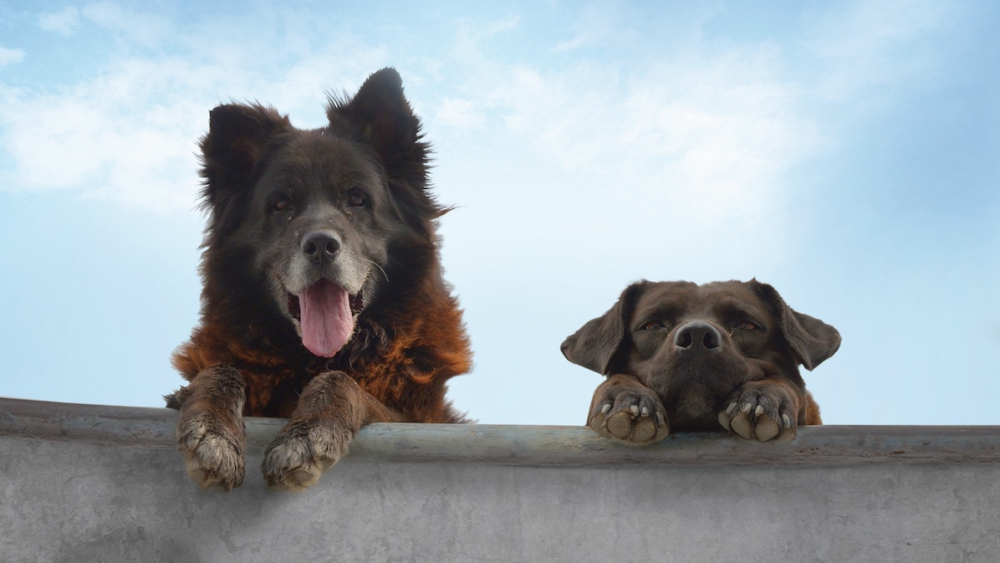
I spoke with Chilean directors and partners Iván Osnovikoff and Bettina Perut on Sunday, April 7, 2019, by phone as part of my remote coverage of the 2019 Full Frame Documentary Film Festival, to discuss their marvelous new documentary Los Reyes (which I also reviewed). The movie follows the lives and deep bond of friendship between two stray dogs in the oldest skate park – “Los Reyes” (“The Kings”) – in Santiago, Chile. Both Football and Chola have the run of the place, though they are mostly amiable, laissez-faire companions to all who pass by (unless one happens to be on wheels, or a donkey). The older Football’s oral fixation with most anything that will fit in his mouth and the younger Chola’s love of dropping balls in the skate pits make them entertaining subjects, but they are not alone, as we hear the chatter of the young skaters – obsessed with drugs, sex, school, family, and careers – as a constant backdrop, forming an evocative cinematic juxtaposition that reminds us of the values and interests that we all, regardless of species, share in common. Here is a condensed digest of our conversation, edited for length and clarity, and occasionally reworded by me into more idiomatic English (Osnovikoff and Perut’s native language is Spanish, though they spoke English with me).
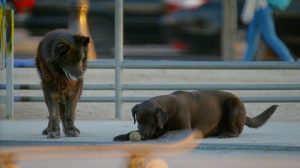
A still from LOS REYES
Hammer to Nail: So, let’s start with how you found the story. How did you decide to make a movie about the Los Reyes Skate Park and focus, visually, on these two stray dogs, Football and Chola?
Bettina Perut: In the beginning, we were thinking about making a movie about skaters; teenagers, skaters in the skate park, with their problems, with their families, with their codes. But we thought that this kind of thing was very conventional, and we wanted a different approach.
Iván Osnovikoff: One day, I was skating in the park and Bettina called me, saying, “This a failure, we have to quit.” And I tried to convince her, saying, “I have these dogs playing with a ball in one of the bowls,” and I told her, “Bettina, you need to come see this.” And she went the very next day and she said, “Okay, this film must be about these two dogs.”
HtN: Except that, although it is about those two dogs, you did decide to keep the audio of these teenagers who were skating in your film. So you sort of combined your original idea with this new idea. How long did it take you to decide on that particular approach? Once you said, “Okay, we love these dogs,” from there to your decision to also include the audio of the skaters, what happened there?
BP: One answer is that we had raised funds to make a film about skaters in a skate park, so we couldn’t completely remove this point. And also, it was interesting for us to put the dogs into a world that was beside them, a world with skaters, other animals, with another kind of existence, and more. So, we couldn’t take out the skaters, but we also didn’t want to show them, because we think that the human being is not the center of the world. That’s why we just wanted to put in only their voices.
IO: Also, because the kids were, after all, our original starting point. And I am an old-school skateboarder, myself. And we also assume, like Raúl Ruiz … I don’t know if you know the Chilean filmmaker …
HtN: Yes.
IO: He says, very strongly, that films are an accumulation of the failures of the previous films, or an accumulation of the versions of the film. So we assume that when we have an idea, the first idea, and then transform another one and another one, finally a film emerges as an accumulation of this sequence of different versions of the film. So, we like to see filmmaking also like that, and the dogs’ lives worked for us very well.
HtN: That’s fascinating, and I’m also a big fan of limitations on art or working under the restrictions of certain limitations. I find the fact that you could not abandon your skater idea, but had to work under that initial condition, quite interesting. So, once you decided to focus on Football and Chola, did you then cease gathering audio of the skaters? Is all the audio that we hear from your previous filming attempt or did you continue to gather some of that material just in case?
BP: We continued to, with the skaters, with image and sound. Meanwhile, we were filming the dogs. Our most important concern with them was the possibility that one of them might die.
IO: Because they are exposed dogs.
HtN: Because they’re exposed to the elements and Football was so old, right?
BP: Yes.
IO: And about the skaters again, it happened that when we began to shoot them, they were involved in drug deals, etc., and were a little shy. So they weren’t doing too much in front of the camera. But when they were informed that they were no longer the main focus of the film, but that the dogs were, they relaxed. So the best footage we have is after changing the focus of the film.
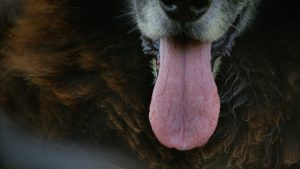
A still from LOS REYES
HtN: Right. That makes sense. They probably spoke more freely after they thought, “Oh, they’re making a movie about the dogs, and not us.” So, you have some very intense close-ups of the dogs, where either you’re on a macro lens and/or you’re just really close. How did you build up rapport with the dogs? Obviously, they’re used to people being in the park, but how did you build up a certain level of trust or simply make them comfortable enough with you around that you could get that close to them with your camera and your lens?
BP: We think that since the beginning, the dogs were very comfortable with the camera, because they just made our life, or our task of following them, so easy. And they were never aggressive or things like that. And when we shot with the macro lens, it’s the natural movement of the dogs. They never felt uncomfortable with the camera. Still, don’t think that we only shot just a few moments with them. When you make a film, in the shooting process, you have a lot of time. It takes a lot of work. Anything you make more or less good, you need a lot of time and persistence to stay there and say, “Wait, wait, wait.” And many times, random things happen, and you have to be prepared to cut to that random thing, because there will be no repeat.
HtN: Sure.
BP: And we are three people who have been working 12 years together, and we are very prepared and have a common language. You have to have very open eyes to cut through the randomness, and in that sense, also, Chola and Football were such a random thing in the park. You could see them in that way, also.
IO: If we had relationship problems with the dogs, it would have been very difficult to get the shots, because when you use a macro, the movement amplifies when you’re very close.
HtN: Indeed.
IO: We did a lot of takes in order to have usable shots finally.
HtN: I’m sure, and what I really love is how you emphasize the texture of their skin, or when you’re so close to the bugs, the mosquitoes, the flies. Some of the footage of the flies may be a little disgusting, but there’s also beauty in that.
BP: Ugly things, many times, are very beautiful.
HtN: It was like your own version of the French documentary Microcosmos.
IO: Yeah.
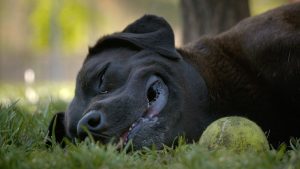
A still from LOS REYES
HtN: So, you only show footage of the dogs having either zero interactions with people or positive interactions with people. You said they weren’t aggressive, but if you’re on wheels, Chola becomes a little aggressive. Were there any people who were not nice to the dogs or was everyone in the park friendly to these two strays?
IO: Yes, there was a guy who trained greyhound dogs. and he was very strange. He would arrive in a truck late at night, and Chola, she was fearful of him. And so, we were worried he might do something to her, because he was a very strange guy and she was aggressive.
HtN: Interesting.
BP: Because she would protect her territory. She’s not aggressive, but protects…
IO: …her home.
HtN: I understand, but it you’re one of those donkeys that she loves to chase, I think their perspective might be different. (laughs)
IO: Yes. (laughs)
HtN: But I do love the montage of her chasing things. I also love the montages of Football barking and all the things that he put in his mouth. Who named the dogs? Did you come up with the names, for the movie, or did they already have the names Football and Chola?
IO: They were named by the people there. Chola has two names, Chola and Blackie, for example. Chola is like “black” in the local, indigenous language, Quechua or Mapuche, in Chile.
BP: There was a woman, Esmeralda, who gave them food everyday, and she knew Football when Football arrived in the park in very bad condition. Very bad. He could barely walk, and she began to get food to him. As he was recovering, she began to see how Football … because next to the park, there are two football fields, where people play. And Football began to go to one side of the field to the other, running with a ball, and that’s why Esmeralda named him Football, because he …
IO: … liked football.
HtN: And not just football. He likes…
BP: …all kinds of balls.
HtN: Well, he liked putting stuff in his mouth; that was clear. He just seems to like having stuff in his mouth. So, your film ends with a sad little title card, which shouldn’t be a surprise, because Football is an old dog, but Football, we learn, is no longer with us. Did he just die of old age?
BP: No. He died because he was poisoned.
HtN: Oh no, really? That’s so sad!
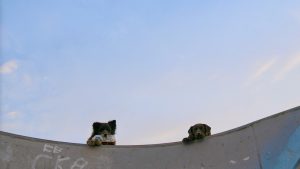
A still from LOS REYES
BP: Yes, but he died with us. I get very sad when I talk about Football. Esmeralda called us one day and told us Football was in very bad condition. But first, I want to also say that in all the time after we finished shooting, we went to visit the dogs with balls and spend time with them. So, one year later, Esmeralda called us to say that Football was in a very bad way, and we went there. We went to the clinic. We stayed three days with him, trying to help, but he died with us. We really loved him. We think he was a crazy dog, a special dog, and we buried Football in the park. We put a silk …
IO: We put him in silk.
BP: We put him in silk. We threw three tennis balls into the grave, and the crazy thing was Chola saw these balls and she wanted to go inside the grave. We were very worried about that. Also, we were worried because she might …
IO: …try to get the balls out after the burying.
BP: It was very emotional, but he’s in the park now.
HtN: So, what about Chola? What happened to her?
IO: Chola is now living with us, although we discussed a lot about whether we ought or not to take Chola out of the park. But one day, she disappeared, and she was gone for one or two days, and when she appeared again, we decided to adopt her. And now she’s living with us. We hope she’s happy. She looks very happy. It was difficult to make that decision, because she had been living in the park before, but also, her life’s changed without Football, because we went there and she was with a ball, but without playing. It was sad to see that the reality we shot doesn’t exist anymore. It’s one of the reasons why we finally took her with us. We’re very happy. And now we’re building a skate bowl in order for her to play in the house, also, with me skating.
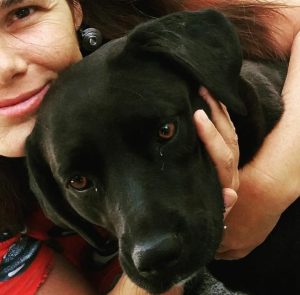
Chola with Bettina Perut
HtN: That’s wonderful, and you have another dog as well, right, so she has a friend?
IO: Yes, absolutely.
BP: Yes, yes.
HtN: Well, thank you so much for making this beautiful movie, and for documenting the lives of these two extraordinary dogs. I really loved your film, and I wish you all good things with it.
IO/BP: Thank you very much.
– Christopher Llewellyn Reed (@ChrisReedFilm)
Like what you see here on Hammer to Nail? Why not pay just $1.00 per month via Patreon to help keep us going?








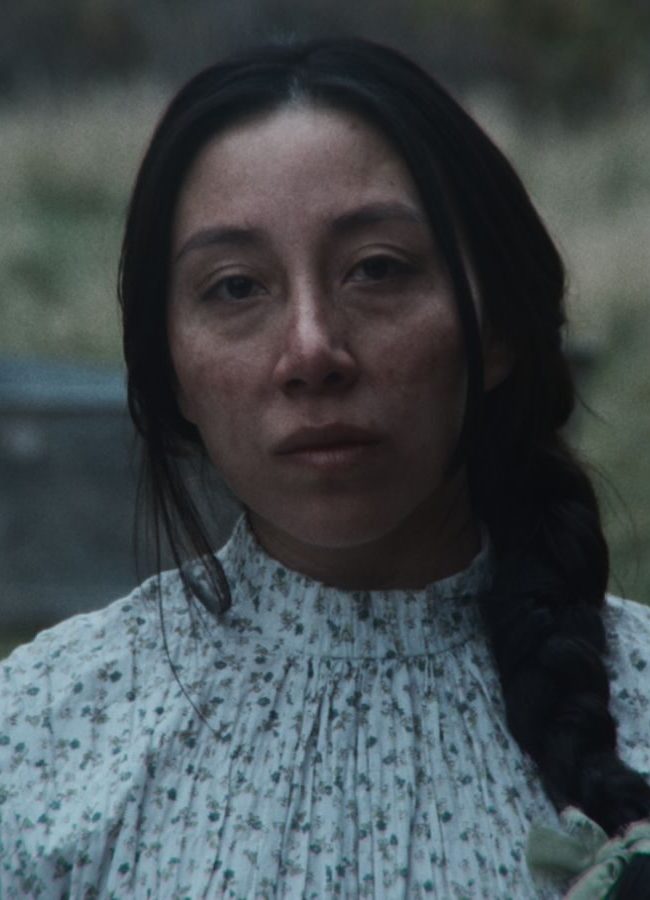
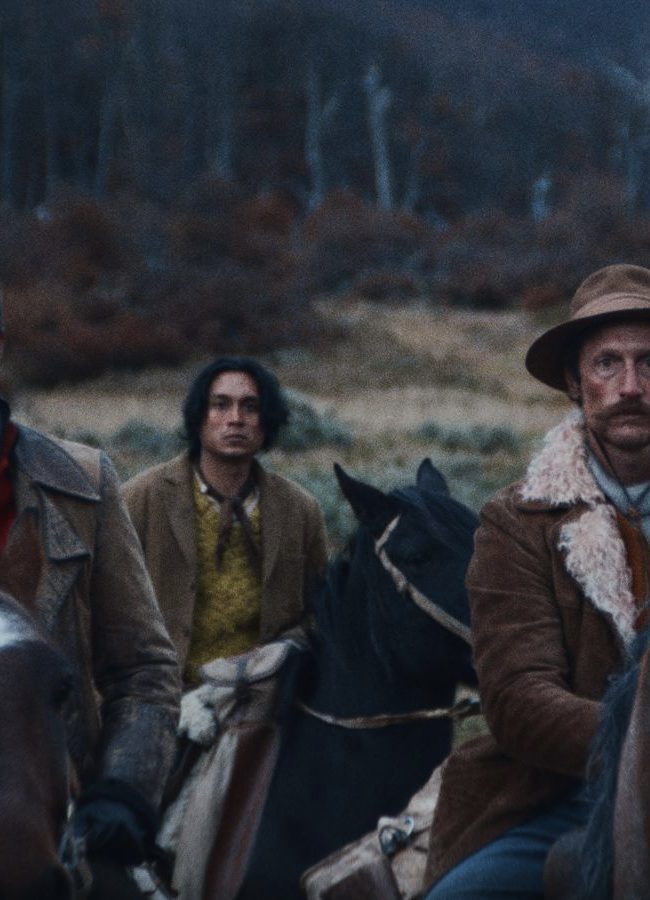


Mary
I just watched the kings i thought it was a beautiful and sad film, I wanted to find out what happened to the dogs and found your interview,
Even though it is sad and upsetting that football died a horrible death it is wonderful to know cholo wasn’t left alone, but has a new life
Thank you for the interview,